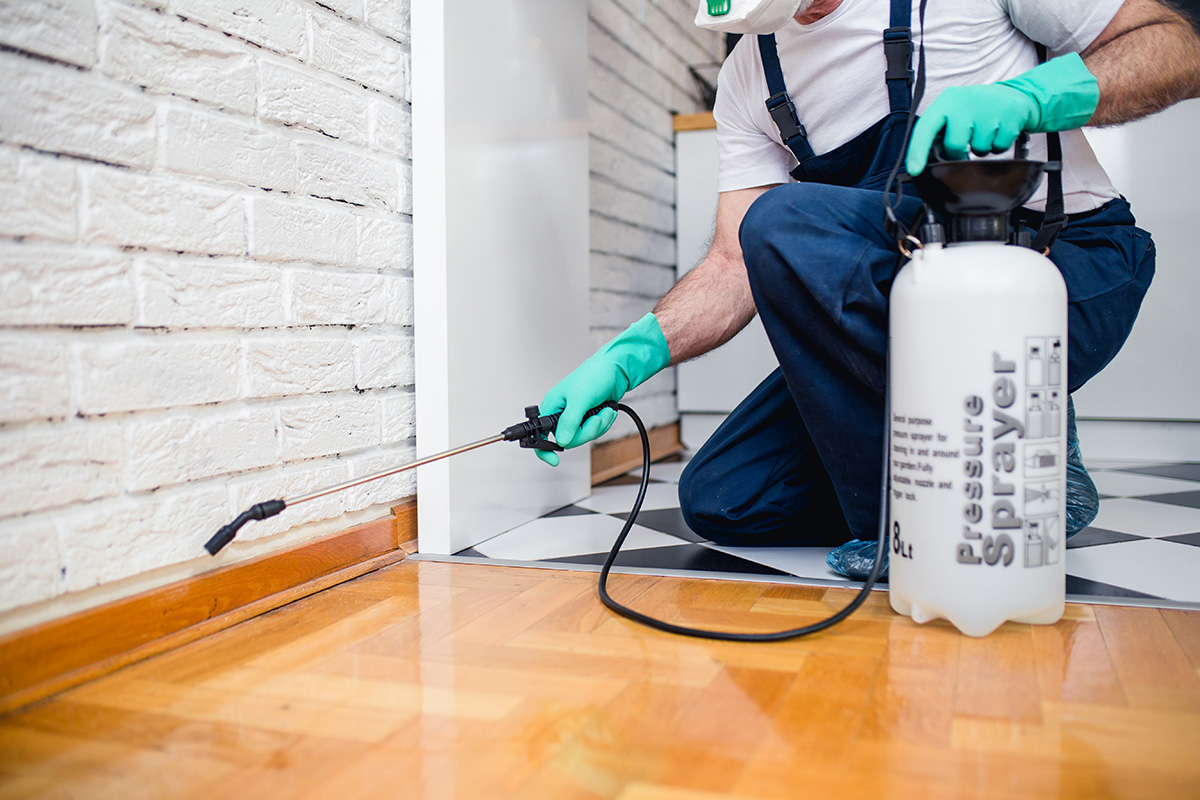A1 Bed Bug Exterminator Charlotte - Efficient and Economical Services
A1 Bed Bug Exterminator Charlotte - Efficient and Economical Services
Blog Article
Bed Insect Therapy Failure: Comparing Chemical Vs. Non-Chemical Solutions
In the realm of pest control, specifically when managing the relentless problem of bed bugs, the option between chemical and non-chemical therapy services can be an essential one. Both methods provide unique benefits and downsides, affecting factors such as performance, safety factors to consider, and total expense. By examining the nuanced information of each technique, a clearer understanding of which path to go after in dealing with a bed insect invasion can be attained.
Effectiveness of Chemical Therapies
Chemical therapies for bed bug invasions have been extensively acknowledged for their rapid and potent efficacy in getting rid of these parasites. When considering the efficiency of chemical therapies, it is important to recognize that they can provide a comprehensive and fast remedy to a bed insect problem. Expert pest control specialists commonly depend on pesticides to target bed pests at various phases of their life process, consisting of eggs, nymphs, and grownups. These chemicals generally function by interrupting the bed pests' worried system, resulting in paralysis and eventual death.
In addition, chemical treatments have the benefit of using recurring results, meaning that they can continue to eliminate bed pests also after the first application. This recurring activity is specifically helpful in combating any kind of possible re-infestations. In addition, the rapid activity of chemical therapies can bring alleviation to people dealing with extreme bed bug infestations, permitting them to reclaim control of their living spaces swiftly.
Safety And Security Worry About Chemical Solutions
One critical aspect that requires careful consideration when utilizing chemical solutions for bed pest therapy is ensuring the safety and security of residents and the setting. Exposure to certain chemicals used in bed bug therapies can lead to respiratory system concerns, skin irritability, or other negative reactions, particularly in individuals with pre-existing problems or level of sensitivities.
Moreover, the environmental impact of chemical services is an additional significant consideration. Some chemicals utilized in bed insect treatments might be hazardous to advantageous insects, wildlife, and ecological communities if they seep into the soil or water supply. It is necessary to utilize chemical therapies deliberately, adhering to safety and security guidelines, and thinking about less hazardous alternatives to alleviate these risks and make sure the efficient and secure administration of bed pest invasions.
Benefits of Non-Chemical Techniques
Taking into consideration the possible safety issues and ecological influence related to chemical services for bed bug treatment, exploring non-chemical approaches presents an encouraging choice with several distinctive benefits. Non-chemical techniques use a more secure option for families, particularly those with pet dogs, my website children, or people conscious rough chemicals. These methods get rid of the risks of exposure to toxic compounds, reducing the potential for unfavorable health and wellness effects. Furthermore, non-chemical treatments are eco-friendly, as they do not add to air or water pollution, making them a sustainable selection for pest control.
Additionally, non-chemical options can be reliable in targeting bed insects, including hard-to-reach areas where chemical treatments may not penetrate. Methods such as heat therapy, vacuuming, steam cleansing, and mattress encasements provide detailed eradication without making use of damaging chemicals. In addition, non-chemical strategies can be much less turbulent, needing marginal preparation and allowing for quicker reentry right into dealt with areas. In general, selecting non-chemical bed pest treatment approaches not only prioritizes safety and environmental security but also guarantees efficient and extensive parasite control.
Limitations of Non-Chemical Treatments

Furthermore, non-chemical therapies frequently call click reference for numerous applications to accomplish successful removal. This can be taxing and might not constantly guarantee full removal of all bed pests and their eggs, specifically in hard-to-reach or concealed places.
Moreover, the success of non-chemical treatments greatly counts on correct implementation and thoroughness, which can be testing for individuals without specialist proficiency. Poor application of non-chemical techniques may lead to insufficient eradication, leading to persistent invasions and the need for extra treatments.
Consequently, while non-chemical treatments have their benefits, it is necessary to acknowledge these limitations and consider them when establishing the most effective strategy for handling bed bug invasions.
Price Comparison: Chemical Vs. Non-Chemical Options
Offered the restrictions connected with non-chemical treatments, a vital element to evaluate in the context of bed pest administration is the expense comparison between chemical and non-chemical alternatives. In comparison, non-chemical therapies like warmth treatment or steam can be extra costly, with expenses ranging from $1,000 to $6,000 for a whole home. While the first price of chemical treatments might seem lower, numerous therapies might be required to completely remove the problem, possibly raising the overall expense.
Conclusion

Considering the potential safety and security problems and ecological effect linked with chemical remedies for bed insect therapy, exploring non-chemical approaches provides an appealing choice with numerous distinct advantages.Offered the dig this restrictions connected with non-chemical therapies, an essential element to review in the context of bed insect administration is the price contrast between chemical and non-chemical alternatives. In comparison, non-chemical treatments like heat therapy or heavy steam can be a lot more expensive, with costs varying from $1,000 to $6,000 for a whole home. While the initial cost of chemical therapies may appear lower, multiple therapies may be required to completely remove the infestation, potentially increasing the general cost.In final thought, when contrasting chemical and non-chemical bed bug treatment alternatives, it is essential to think about performance, safety, benefits, limitations, and expense.
Report this page